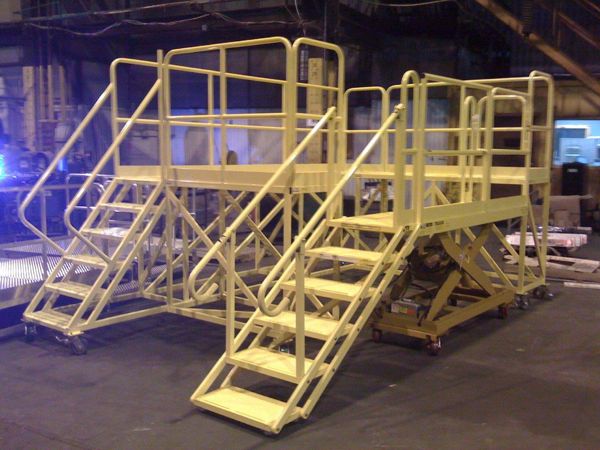
Introduction
In today’s fast-paced work environments, ensuring safety is paramount. Work platforms play a vital role in various industries, providing elevated access for tasks ranging from construction to maintenance. However, accidents involving work platforms can have severe consequences. This article delves into the essential safety features of work platforms, offering insights and guidance to promote workplace safety.
Understanding Work Platform Safety
What are the essential safety features of work platforms?
Work platforms are equipped with a range of safety features designed to mitigate risks and enhance worker protection. Understanding these features is crucial for maintaining a safe working environment.
Guardrails and Toeboards
Guardrails and toeboards are fundamental safety features of work platforms, providing a protective barrier around the platform’s perimeter. Guardrails prevent workers from accidentally falling off the platform, while toeboards prevent tools or materials from falling, minimizing hazards below.
Accidental falls are a significant cause of workplace injuries, making robust guardrails and toeboards essential for preventing such incidents.
Non-Slip Surfaces
Work platforms should feature non-slip surfaces to provide traction and stability, especially in environments where surfaces may be wet or slippery. Non-slip surfaces reduce the risk of slips and falls, ensuring that workers can maneuver safely on the platform.
Sturdy Construction
The structural integrity of work platforms is paramount for safety. Platforms should be constructed from durable materials capable of supporting the intended load capacity. Sturdy construction ensures stability and reduces the risk of platform failure or collapse.
Safety Harnesses and Fall Arrest Systems
In high-risk environments or when working at elevated heights, safety harnesses and fall arrest systems are essential safety measures. These devices provide additional protection against falls by securing workers to the platform or structure.
Maximizing Safety Through Risk Assessment
Beyond the inherent safety features of work platforms, conducting thorough risk assessments is crucial for identifying potential hazards and implementing appropriate safety measures. By assessing factors such as load capacity, environmental conditions, and worker competency, employers can mitigate risks and ensure a safer work environment.
Frequently Asked Questions
Are work platforms suitable for all types of tasks?
Work platforms vary in design and functionality, and their suitability depends on the specific task requirements. It’s essential to select the appropriate platform for the intended use to ensure safety and efficiency.
Do work platforms require regular maintenance?
Yes, regular maintenance is essential to ensure the continued safety and functionality of work platforms. This includes inspections for wear and tear, checking structural integrity, and addressing any issues promptly.
Can work platforms be used in adverse weather conditions?
While some work platforms are designed for outdoor use, adverse weather conditions such as strong winds or heavy rain can pose safety risks. It’s crucial to assess weather conditions and take appropriate precautions to ensure worker safety.
What training is required for operating work platforms?
Operators should receive comprehensive training on the safe operation of work platforms, including proper usage, safety protocols, and emergency procedures. Ongoing training and refresher courses are also beneficial to reinforce safety practices.
Are there regulations governing the use of work platforms?
Yes, various regulations and standards govern the design, operation, and maintenance of work platforms to ensure worker safety. Employers must comply with these regulations and implement appropriate safety measures.
How can employers promote a safety culture regarding work platforms?
Employers play a crucial role in fostering a safety culture within the workplace. This includes providing adequate training, enforcing safety protocols, and encouraging open communication about safety concerns.
Conclusion
Ensuring workplace safety is a shared responsibility that requires proactive measures and adherence to established safety standards. By understanding the essential safety features of work platforms and implementing robust safety protocols, employers can create a safer work environment for their employees.
